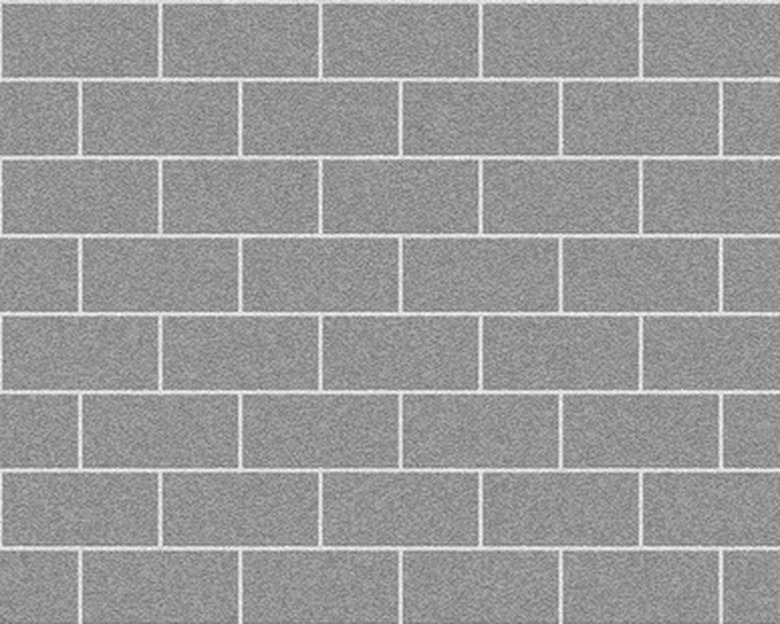How To Secure Plywood To A Concrete Block
Things Needed
-
Plywood
-
Circular saw
-
Jig saw
-
Construction adhesive
-
Caulk gun
-
2x4 Lumber
Several methods can be used to connect plywood to concrete blocks, or Concrete Masonary Units (CMUs), as they're officially known. Plywood will provide a way to secure other finish materials to the concrete block. Before attaching the plywood, you should apply a concrete sealer to the CMU block. This will keep water from penetrating the structure in the future when you will not have access to the concrete block.
Glue Method
Step 1
Scrub the concrete block where you want to attach the plywood, using a stiff scrub brush but no water. You are trying to remove any debris from the block so the construction adhesive can bond to it.
Step 2
Cut any openings in the plywood for outlets, windows or doors before you glue the plywood in place. Plywood is easier to cut when it is flat on a pair of sawhorses than when it is on a vertical wall surface. Use a circular saw or a jigsaw for this step.
Step 3
Apply a layer of construction adhesive with a caulk gun to the back of the plywood. Lean the plywood against the concrete block, making sure the wood is where you want it as the glue dries. Use 2-by-3 lumber to brace it in position as the adhesive sets.
Furring Strip Method
Step 1
Cut the 2-by-3 lumber (true measure: 1 1/2 by 2 1/2 inches) into furring strips on the table saw. The furring strips will provide a foundation into which the plywood will be fastened.
Step 2
Mark the concrete-block walls at 16 inches on center to indicate where the furring strips will be attached. Placing the furring strips every 16 inches guarantees the 4-foot-wide plywood will always be supported, on both edges and twice between them. At that distance, the strips are close enough to prevent buckling.
Step 3
Hold the furring strip against the cinder block at one of the 16-inch marks. Make a mark on the furring strip about every 16 inches along the length of the board. Be sure the mark falls within the blocks, not between them. The joints will not hold the concrete screws. Drill a pilot hole in the furring strip at each mark along the length of the board. Use a countersink drill bit. You want the screw head to sit below the surface of the furring strips so the plywood will sit flat against the strip.
Step 4
Secure a concrete drill bit into a hammer drill. Place a piece of painter's tape on the drill bit 3 inches from the tip to give you a visual indication of how deep you need to drill through the wood and block. Hold the furring strip against the block at the 16-inch-on-center mark. Drill a hole through the pilot hole into the concrete block up to the painter's tape on the drill bit.
Step 5
Attach the furring strip to the block with 3-inch concrete screws. Use a power screwdriver to drive the screw into the furring strip. Check with a carpenter's level to see that the furring strip is level and repeat for the remaining holes.
Tip
Apply a line of construction adhesive to the back of the furring strips for additional holding strength.
Warning
Wear safety glasses when operating power tools.
